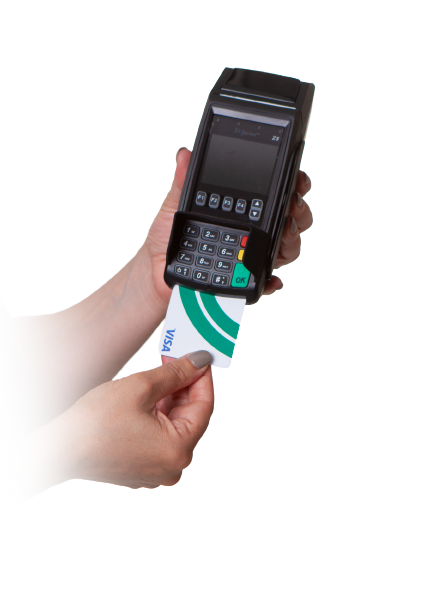Upgrading a POS system can pave the way for smoother operations, better customer experiences, and increased efficiency. But the process isn’t always straightforward. Many businesses—often with the best intentions—make errors that lead to unnecessary delays, unexpected costs, or even a drop in service quality. These mistakes, while common, can disrupt daily operations and impact the bottom line when not addressed. With the right approach, these pitfalls can be avoided, saving time, money, and frustration.
Choosing a One-Size-Fits-All POS System
When upgrading your POS system, it’s easy to assume that a one-size-fits-all solution can handle your needs. After all, the prospect of covering all your bases with a single system may seem cost-effective and convenient. However, this approach often leads to operational inefficiencies and growing pains down the road. Here’s why taking the time to evaluate your specific business needs is critical before making this decision.
The Need for Industry-Specific Features
No two industries operate in the same way, so why should their POS systems? Tailored POS solutions often come with features designed to address specific pain points, increasing efficiency and enhancing the customer experience. On the other hand, generic POS systems often lack the functionality businesses need to run smoothly.
For example:
- Retailers depend on inventory management tools that provide real-time stock updates and low-stock alerts. A system without these features can lead to either overstocking or missed sales opportunities due to empty shelves.
- Restaurants and cafes need tools such as table mapping, menu modifications, and split-billing capabilities. Using a system without these features may result in service delays, frustrated customers, or operational chaos during busy hours.
- Service-based businesses, like salons, usually require appointment scheduling features integrated with their sales reports. A one-size-fits-all system may cause double bookings or missed appointments, leading to poor customer service.
Choosing a system that doesn’t account for these differences can feel like trying to fit a square peg into a round hole. Businesses end up adding third-party tools or manual workflows to account for missing features, which undermines the very purpose of having a POS system in the first place.

Photo by iMin Technology
Impact of Poor Scalability on Long-Term Growth
Let’s say you find a POS system that’s affordable and easy to set up. It works great for your current needs, so you pull the trigger without much consideration. Fast forward a few years, and your business grows: you open new locations, increase your product lines, or begin operating both online and in-store. Suddenly, your POS system struggles to keep up.
Poor scalability is one of the top reasons businesses regret their POS upgrades. Here’s how it can limit growth:
- Limited Multi-Location Support: If your POS cannot support multiple locations on a unified platform, managing sales, inventory, and employees becomes time-consuming and prone to errors.
- Lack of Advanced Integrations: Modern businesses rely on integrations with e-commerce, accounting, and customer relationship management (CRM) software. A system that doesn’t allow these connections will create operational silos, forcing you to juggle multiple disconnected tools.
- Increased Downtime: Over time, the strain on a low-capacity system results in frequent crashes or slower processing speeds, frustrating both employees and customers.
To future-proof your business, choose a POS system designed to grow with you. Look for systems that support unlimited users, advanced reporting tools, and integrations with other software solutions. Think of it not as an expense but as an investment in your ability to scale effortlessly. Your POS should be a solid foundation you can build upon—not a ceiling holding you back.
By prioritizing scalability and industry-specific features, businesses avoid common pitfalls that can cost them time, money, and customer trust. The right system adapts and evolves with your business, ensuring a smoother path toward long-term success.
Neglecting Employee Training on the New System
A new POS system can be a powerful tool for streamlining operations and improving customer interactions. But even the most advanced system can fall flat if your employees don’t know how to use it effectively. Unfortunately, many businesses underestimate the importance of proper training. They assume that employees will “figure it out” or that a user-friendly interface eliminates the need for structured instruction. This oversight often results in inefficiencies, transaction errors, frustrated staff, and unhappy customers.
Common Training Oversights
When upgrading your POS system, skipping or skimping on employee training is one of the easiest ways to sabotage your investment. Here are some of the most frequent missteps businesses make:
- Training Only Key Staff Members: While it’s tempting to focus on training managers or key personnel and assume they’ll pass on their knowledge, this strategy often leads to gaps in understanding. Employees who don’t receive direct training may remain unclear on key processes or features, leading to inconsistent service.
- Assuming a User-Friendly System is Self-Explanatory: Intuitive software is helpful, but it’s rarely enough on its own. Employees still need to know how to handle real-world scenarios, such as fixing transaction errors or troubleshooting hardware issues.
- Overloading Employees with One-Time Training Sessions: Expecting employees to retain all necessary information from a single training session is unrealistic. Without reinforcement, much of what they learn will be forgotten, leaving them unprepared when they encounter challenges.
- Skipping Role-Specific Training: A cashier’s responsibilities differ from those of a store manager or an inventory clerk. Providing one-size-fits-all training may leave some employees feeling overwhelmed, while others lack the precise knowledge they need to perform their jobs efficiently.
Neglecting training isn’t just about knowledge gaps—it can lead to increased transaction processing times, greater error frequency, and ultimately, an underwhelming customer experience. Gaps in confidence can also harm team morale and create a snowball effect of inefficiency.

Photo by RDNE Stock project
Strategies for Effective Training
To maximize the benefits of your new POS system, training should be seen as a priority, not an afterthought. A well-structured approach will empower your team, minimize disruptions, and ensure smooth day-to-day operations.
Here are practical strategies for ensuring your training hits the mark:
- Provide Hands-On Practice
Nothing beats learning by doing. Allow employees to interact with the system in a controlled setting where they can experiment without fear of making mistakes. Real-world scenarios, such as processing transactions or resolving errors, give staff confidence and prepare them for everyday challenges. - Create Role-Specific Training Modules
Not every feature or function is relevant to all employees. Tailor training to individual roles so everyone learns the aspects of the system that are most important to their job. For example, cashiers should focus on checkout processes, while managers might dive deeper into reporting and analytics. - Offer Ongoing Training Opportunities
Remember, training isn’t a one-and-done process. Host regular follow-up sessions to address new features, reinforce core concepts, and provide a space for employees to ask questions or troubleshoot. This approach ensures continuous learning and mastery over time. - Develop Easy-to-Follow Training Materials
Supplement in-person training with written guides, video tutorials, and reference sheets that employees can consult whenever they need a refresher. The simpler and more accessible these resources are, the more likely staff will use them. - Appoint a Training Ambassador
Designate team members who can serve as on-site go-to experts for the system. These ambassadors can provide support, answer questions, and help other employees navigate the software during the early stages of implementation.
By prioritizing training, you’re not just teaching your employees how to use the POS system—you’re demonstrating that their success matters. This investment in their confidence and competency creates a ripple effect, improving productivity and the overall customer experience. Remember, a proficient team is the driving force behind a successful POS transformation.
Ignoring Software Updates and Regular Maintenance
Staying current with software updates may seem like a minor detail in the day-to-day running of your business, but ignoring these updates can have severe consequences. From data security to operational efficiency, outdated software often puts businesses at significant risk. Here’s what you need to know about the dangers of letting updates slide.
Security Risks and Vulnerabilities

Photo by Andrey Matveev
Failing to keep your POS system up to date can leave your business as exposed as a house with an unlocked door. Software developers regularly release updates that address vulnerabilities and patch gaps that cybercriminals could exploit. When these updates are ignored, your system becomes a magnet for potential hackers aiming to access sensitive customer data or critical business files.
The consequences include:
- Data Breaches: An outdated POS system is a prime target for cyberattacks aimed at stealing credit card information, personal details, or even your business’s financial records.
- Ransomware and Malware Attacks: Attacks like WannaCry highlighted how major security flaws can cripple businesses in minutes. Ransomware can hold your system hostage, costing you financially and operationally.
- Non-Compliance With Standards: Many industries require compliance with standards like PCI DSS (Payment Card Industry Data Security Standard). Using outdated software might mean falling out of compliance and exposing your business to legal action or stiff penalties.
Think of updates as the lifeblood that keeps your security robust. Skipping them can create weak points that endanger not just your business but also the trust your customers place in you.
Operational Inefficiencies from Outdated Systems
When businesses run outdated software, it’s not just the security risks that pile up—it’s also the inefficiencies that creep into daily operations. Over time, older systems become slower, less reliable, and increasingly frustrating for staff and customers alike.
Here’s how this plays out:
- Slower Transactions: Imagine waiting an extra 10–15 seconds for each transaction to process because your POS system is running on outdated software. Those seconds may seem small, but they accumulate into longer lines, frustrated customers, and lost sales, particularly during peak times.
- Lack of Modern Features: Technology is advancing rapidly. If your software isn’t up to date, you may miss out on features like mobile payment integration, real-time reporting, or customer loyalty program capabilities. These are no longer “bonus” features—they’re baseline expectations.
- Hardware Incompatibility: Newer hardware often requires updated software to function correctly. Using old versions can lead to hardware errors, device crashes, or even the inability to connect with other essential tools in your technology stack.
Imagine trying to navigate using an old paper map, while your competitors cruise ahead with GPS. Outdated software slows you down and keeps you stuck in the past, while others move forward efficiently.
Regular updates and proactive maintenance aren’t just about avoiding problems. They position your business to operate faster, smarter, and more securely, allowing you to focus on growing your bottom line rather than fighting fires.
Overlooking Integration with Other Business Systems
When considering a POS system upgrade, many businesses focus on features like speed, usability, and cost. However, overlooking how the system integrates with other essential business tools can create significant bottlenecks later. Your POS system isn’t just a tool for processing sales—it’s a hub for connecting the dots across multiple facets of your business, from inventory management to customer relationship management (CRM). A lack of integration can result in errors, wasted time, and inefficiencies that ultimately hurt growth.
Challenges of Manual Data Management
Relying on manual data entry between disconnected systems can quickly become a nightmare for your business. When your POS system doesn’t sync seamlessly with other business tools, such as inventory or accounting software, you’re left patching information together by hand. But manual processes aren’t just tedious—they’re dangerous.
Here are some common issues caused by manual data management:
- Human Error: People make mistakes, especially when transferring large volumes of data. A miskeyed figure could lead to inaccurate inventory counts, pricing errors, or misreported sales.
- Time-Consuming: Manual data entry forces your employees to spend hours copying and pasting data instead of focusing on revenue-generating tasks. This inefficiency can bog down daily operations, especially during peak periods.
- Inaccurate Reporting: Without accurate, up-to-date data, your reports don’t reflect your business’s actual performance. That means you could make strategic decisions based on incomplete or incorrect information.
- Duplicate Efforts: Imagine updating inventory in one software only to realize it hasn’t updated in your POS system. This redundant work costs time and creates frustration for your staff.
The compounding inefficiencies from these issues can weigh heavily on a growing business. In a fast-paced world, relying on outdated, manual processes is like driving a car with the parking brake on—slow, painful, and ultimately unsustainable.
Benefits of Real-Time Data Synchronization
So, what happens when your POS system is fully integrated with tools like accounting software, inventory management platforms, and CRM solutions? The solution lies in automation and real-time data synchronization. With a well-integrated POS system, updates happen automatically across all connected platforms—saving time, reducing errors, and providing critical insights to improve decision-making.
Here are some ways integration benefits your business:
- Accurate Inventory Management
Every time you process a sale, your stock levels adjust automatically. You no longer have to worry about overselling or understocking since you’ll always know your inventory in real-time. Features like automated reordering become possible when your systems are integrated, keeping your shelves stocked without manual intervention. - Seamless Accounting
Integrating your POS with accounting software removes the guesswork from financial reporting. Transactions, refunds, payroll, and taxes sync directly to your books, ensuring clean, compliant records while sparing you the need to crunch numbers manually. - Improved Customer Insights
A POS linked to your CRM captures detailed customer data—purchase history, preferences, and even feedback. This integration lets you run targeted promotions or loyalty programs with confidence, personalizing the experience for every customer. - Streamlined Multichannel Operations
If you’re selling online and in-store, an integrated POS system ensures all sales channels communicate flawlessly. Your inventory updates across platforms in real-time, reducing the risk of promising a product online that’s already sold out in-store. - Faster, Smarter Decision-Making
Real-time syncing gives you accurate data at your fingertips. Want to know your best-selling products or peak sales hours? Integrated systems generate updated reports and analytics instantly, so you can pivot quickly when needed.
This is more than just saving time—it’s about positioning your business for smarter, data-driven growth. Think of integration as the key to finally breaking free from operational silos. Companies that embrace it are like well-oiled machines, able to pivot when trends shift, optimize workflows, and give customers consistent experiences—without dropping a stitch.

Photo by iMin Technology
The bottom line? Businesses that prioritize integrating their POS systems with other tools are set up for smoother operations and faster growth. By connecting your systems, you eliminate inefficiencies and open the door to opportunities you never knew existed.
Failing to Prioritize Data Security
When businesses upgrade their POS systems, one critical issue often gets sidelined: data security. In today’s landscape of increasing cyber threats, failing to prioritize data protection puts not just your business, but also your customers’ trust, at stake. A breach doesn’t just hurt financially; it damages your reputation in ways that can take years to rebuild. The responsibility to secure systems isn’t optional—it’s essential.
Common Data Security Mistakes

Photo by Ivan Samkov
Many businesses, even with the best intentions, fall into the trap of neglecting key security measures. Here are some of the most common errors:
- Weak Passwords: Using simple, easy-to-guess passwords or reusing default credentials makes systems highly vulnerable to attacks. Hackers often exploit these weak spots to access sensitive information.
- Skipping Encryption: Data that isn’t encrypted—both in transit and at rest—is a gold mine for cybercriminals. Imagine handing over customer credit card information without even trying to lock the door.
- Lack of Multi-Factor Authentication (MFA): Relying on passwords alone, without a second layer of authentication, makes it easier for unauthorized users to gain access.
- Neglecting Regular Software Updates: Failing to keep POS software and firmware current often leaves systems exposed to known vulnerabilities. These updates aren’t just “nice-to-haves”—they’re critical patches for protecting against new threats.
- Improper Employee Access Controls: Allowing too many people to access sensitive systems without restrictions increases the risk of accidental breaches. Clear permissions and roles are needed for modern business security.
- Avoiding Regular Security Audits: Ignoring routine audits means businesses often miss glaring holes in their defenses, leaving them at risk far longer than they realize.
Even a single one of these gaps can lead to devastating outcomes. Think of these errors as leaving your business equivalent to a house with its windows open during a storm.
Best Practices for Securing Customer Data
Securing customer data doesn’t have to be overwhelming if you break it down into actionable steps. Building a robust data protection strategy ensures you don’t just meet the bare minimum but actively win customer confidence in an era of increasing cyber risk.
Here are the critical practices every business should follow:
- Encrypt Sensitive Data
Whether it’s customer payment information or internal business details, encryption is non-negotiable. Data should be encrypted both when it’s stored and when it’s being sent between systems. This makes intercepted data useless to hackers. - Implement Multi-Factor Authentication (MFA)
Adding an extra layer of security—such as a one-time code sent via mobile device or email—can protect sensitive systems even if a password is compromised. - Conduct Regular Security Audits
Think of these as checkups for your system. Schedule audits to identify vulnerabilities and fix them immediately, rather than waiting for a problem to arise. - Train Employees on Security Protocols
Your team is your first line of defense. Regular training on recognizing phishing scams, safeguarding login details, and following proper checkout procedures can dramatically reduce risk. - Limit System Access
Not every employee needs full access to your POS system. Use clear permissions to ensure only the necessary team members can handle customer data. - Backup Data Routinely
Perform secure and regular backups to ensure you’re prepared to recover in the event of hardware failure or ransomware attacks. Backups should be encrypted and stored securely offline or in the cloud. - Invest in Secure Infrastructure
Look for POS systems offering end-to-end encryption, tokenization, and PCI DSS (Payment Card Industry Data Security Standard) compliance. These features are designed to keep both your business and your customers safe. - Partner with Trusted Vendors
If third-party providers maintain part of your POS system, ensure they follow strict security protocols. Vendor negligence can easily lead to vulnerabilities for your business.
By following these steps, you establish not just a shield for your current operations, but also deliver peace of mind to your customers. When people trust that their information is safe, they’re more likely to return to your business time and time again. Security isn’t just about protection—it’s about building loyalty.
Conclusion
Avoiding mistakes when upgrading a POS system isn’t just about saving time or money—it’s about building a foundation for sustainable growth. A system tailored to your industry, properly integrated, and supported by well-trained employees ensures smoother workflows and stronger customer experiences. Regular updates and robust security practices protect your investments and your reputation.
Take the time to plan your upgrade carefully, focusing on your specific needs, scalability, and long-term goals. Investing in the right system today can prevent headaches tomorrow. Ready to make smarter decisions for your business? Start evaluating your options now and set yourself up for success.





